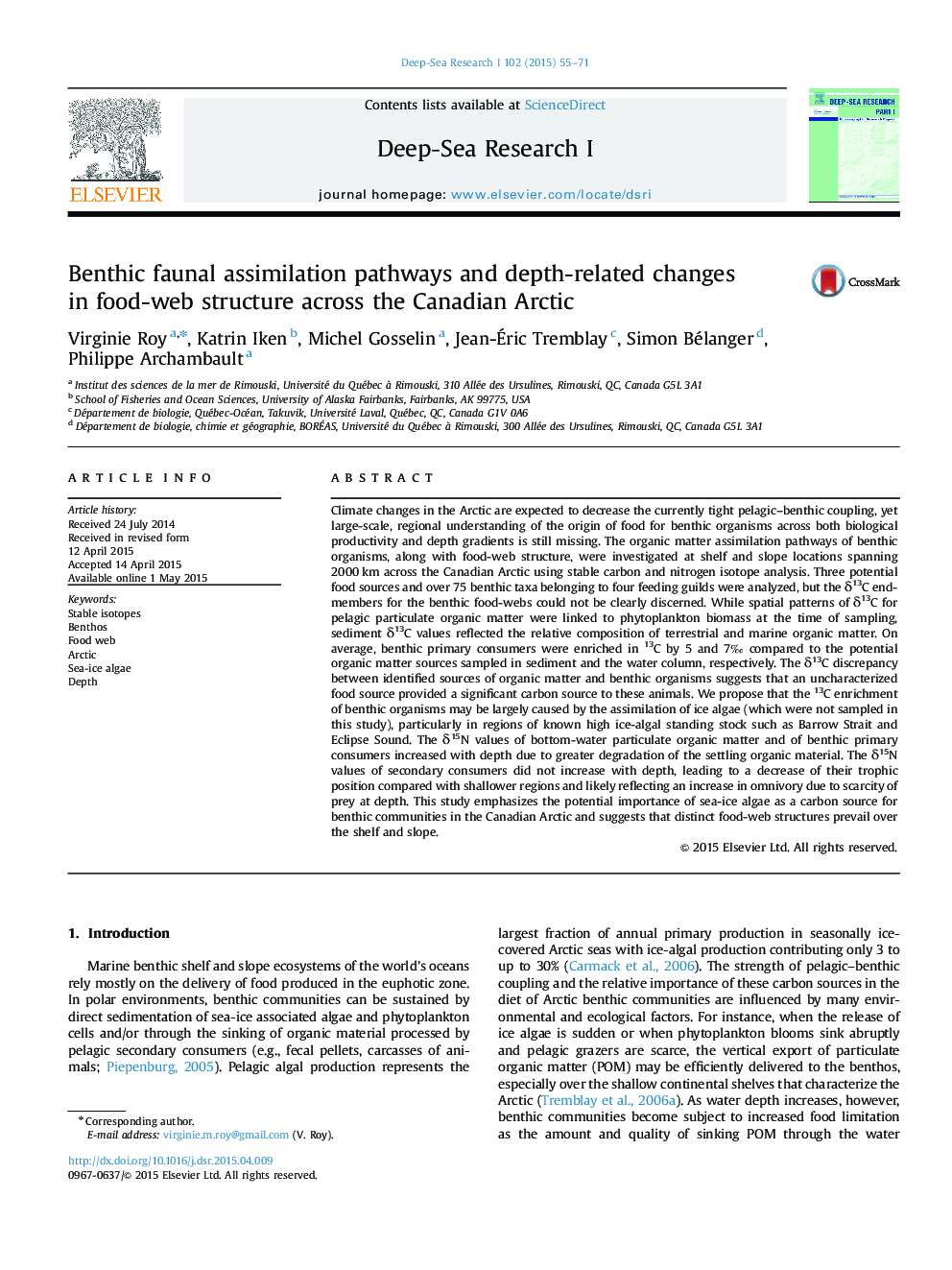| کد مقاله | کد نشریه | سال انتشار | مقاله انگلیسی | نسخه تمام متن |
|---|---|---|---|---|
| 6383398 | 1626328 | 2015 | 17 صفحه PDF | دانلود رایگان |
عنوان انگلیسی مقاله ISI
Benthic faunal assimilation pathways and depth-related changes in food-web structure across the Canadian Arctic
ترجمه فارسی عنوان
مسیرهای جذب فضایی بنتسی و تغییرات مربوط به عمق در ساختار غذای وب در سراسر قطب شمال کانادا
دانلود مقاله + سفارش ترجمه
دانلود مقاله ISI انگلیسی
رایگان برای ایرانیان
کلمات کلیدی
ایزوتوپهای پایدار، بنتوس، وب غذایی، قطب شمال، جلبک دریایی یخ، عمق،
موضوعات مرتبط
مهندسی و علوم پایه
علوم زمین و سیارات
زمین شناسی
چکیده انگلیسی
Climate changes in the Arctic are expected to decrease the currently tight pelagic-benthic coupling, yet large-scale, regional understanding of the origin of food for benthic organisms across both biological productivity and depth gradients is still missing. The organic matter assimilation pathways of benthic organisms, along with food-web structure, were investigated at shelf and slope locations spanning 2000 km across the Canadian Arctic using stable carbon and nitrogen isotope analysis. Three potential food sources and over 75 benthic taxa belonging to four feeding guilds were analyzed, but the δ13C end-members for the benthic food-webs could not be clearly discerned. While spatial patterns of δ13C for pelagic particulate organic matter were linked to phytoplankton biomass at the time of sampling, sediment δ13C values reflected the relative composition of terrestrial and marine organic matter. On average, benthic primary consumers were enriched in 13C by 5 and 7Ⱐcompared to the potential organic matter sources sampled in sediment and the water column, respectively. The δ13C discrepancy between identified sources of organic matter and benthic organisms suggests that an uncharacterized food source provided a significant carbon source to these animals. We propose that the 13C enrichment of benthic organisms may be largely caused by the assimilation of ice algae (which were not sampled in this study), particularly in regions of known high ice-algal standing stock such as Barrow Strait and Eclipse Sound. The δ15N values of bottom-water particulate organic matter and of benthic primary consumers increased with depth due to greater degradation of the settling organic material. The δ15N values of secondary consumers did not increase with depth, leading to a decrease of their trophic position compared with shallower regions and likely reflecting an increase in omnivory due to scarcity of prey at depth. This study emphasizes the potential importance of sea-ice algae as a carbon source for benthic communities in the Canadian Arctic and suggests that distinct food-web structures prevail over the shelf and slope.
ناشر
Database: Elsevier - ScienceDirect (ساینس دایرکت)
Journal: Deep Sea Research Part I: Oceanographic Research Papers - Volume 102, August 2015, Pages 55-71
Journal: Deep Sea Research Part I: Oceanographic Research Papers - Volume 102, August 2015, Pages 55-71
نویسندگان
Virginie Roy, Katrin Iken, Michel Gosselin, Jean-Ãric Tremblay, Simon Bélanger, Philippe Archambault,
